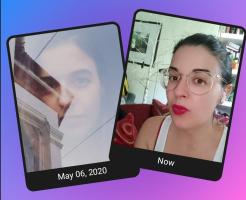Copy Link
Add to Bookmark
Report
Current Cities Volume 11 Number 01

Current Cites
Volume 11, no. 1, January 2000
Edited by Teri Andrews Rinne
The Library, University of California, Berkeley, 94720
ISSN: 1060-2356
http://sunsite.berkeley.edu/CurrentCites/2000/cc00.11.1.html
Contributors: Terry Huwe, Michael Levy, Leslie Myrick , Margaret
Phillips, Jim Ronningen, Lisa Rowlison, Roy Tennant
Antelman, Kristin. "Getting out of the HTML Business: The
Database-Driven Web Site Solution." Information Technology and
Libraries 18 (4) (December 1999): 176-181. - Library webweavers who
are feeling over-burdened with the labor of keeping huge web sites
current and interesting can take heart: there is a new generation of
tools that are within reach and can vastly ease the workload.
Antelman's excellent overview of database-driven web management will
tell you everything you need to know about how to evaluate the best
products, as well as how to reorganize the information architecture of
your web site. She rightly assesses that many library web managers are
still employing 1995-era tools, even though their sites now receive
thousands of hits per day and are essential parts of the library's
mission. Newer products (like Cold Fusion) carry higher price tags but
are technically within reach for most webweavers. Start here to begin
updating your sense of the possible. - TH
Bauer, Kathleen. "Who Goes There? Measuring Library Web Site Usage"
Online 24 (1) (January 2000)
(http://www.onlineinc.com/onlinemag/OL2000/ bauer1.html). - This is a
useful introduction to the subject for all of us who aren't server
administrators. Requests from clients (web browsers, in this case) to
servers can be recorded in logs. Bauer gives examples of types of log
file entries (common log, referrer log, agent log) and explains how to
read them. Limitations are described; the most important caveat is
that such logs only record incidents of requests for specific files on
a server, which doesn't necessarily give a clear measurement of user
interest due to variables like dynamic IP addressing (e.g. an ISP
assigning different IP numbers to the same user at different points in
time) and web page caching in memory at the client end. Sources of log
analysis software are evaluated and URLs are given for them, and for
links to further reading. Note that when this cite was written, I
found that several of the supplied links were broken or lead to wrong
places. - JR
Bertot, John Carlo, Charles R. McClure and Kimberly A. Owens.
"Universal Service in a Global Networked Environment: Selected Issues
and Possible Approaches" Government Information Quarterly 16(4) 1999.
- Providing universal service for networked information resources is
generally seen as a good thing. There are some who naively assume that
once the infrastructure problems are overcome (like creating wireless
networks in countries so impoverished that people will dig wires out
of the ground to sell the copper) we'll all join together in a utopian
global group-hug. This article analyzes the policy questions which
complicate the issue: governmental controls, the influence of
industrialized nations, economics, cultural attitudes, even
conflicting definitions of what is meant by universal service. As the
U.S. is the leading player, there is a lot of space devoted to
American policies and efforts, but due recognition is given to the
fact that some attitudes simply don't work elsewhere, and discussion
points are proposed which can be used to avoid cultural stalemates.
All of the articles in this issue of the quarterly are on the subject
of universal access. These rather dry reports don't have a lot of
pizazz; I can imagine them in that pile of Al Gore's "fun" reading
which he gets kidded about. But if you dismiss this sort of thing
because you consider yourself an anti-bureaucracy, under the radar,
direct action, access to the people techno-cowboy or girl, just
remember that ultimately this policy-making layer affects everybody. -
JR
Clarke, Roger. "Freedom of Information? The Internet as Harbinger of
the New Dark Ages" First Monday 4 (11) (November 1, 1999)
(http://www.firstmonday.dk/issues/issue4_11/clarke/). - Clarke
assesses the impact of the Internet by deconstructing the popular
media zeitgeist view of the Net, and then evaluating reactions by
powerful institutions. "The digital era has ambushed and beguiled us
all," he says. "Its first-order impacts are being assimilated, but its
second-order implications are not." While we are being beguiled and
seduced by a Madison-Avenue dominated dialogue with Utopian overtones,
vested interests are hard at work to protect their interests. The
battle royal will continue, he says, and the outcome is uncertain. For
example, a failure of new paradigms could result in tighter controls
on new media and limit intellectual expression. On the other hand,
email is a written medium that, according to The New Yorker's Adam
Gopnik, is reviving the Eighteenth Century literary culture of letter
writing as an art form. The one thing that is certain is that the pace
of change will be rapid, and that no one will relinquish territory
willingly. - TH
Coffman, Steve. "'And Now, a Word From Our Sponsors...': Alternative
Funding for Libraries" Searcher 8(1) (January 2000)
(http://www.infotoday.com/searcher/jan00/coffman.htm). - Rabble-rouser
and pot-stirrer Coffman is at it again. Thank god, since the pot needs
stirring and the rabble (or, in actual fact, not "rabble" but
librarians) need rousing. As is sometimes the case, Coffman is long on
ideas and short on documented fact (although he refers to a number of
sources, there are few citations). But be that as it may, it would
behoove librarians to not throw this baby out with the bath water.
Where Coffman shines is in tipping one of the most staid institutions
we have (libraries) on its side and shaking hard. Anything not bolted
down goes flying, and suddenly we're left with figuring out just what
we *do* need. In the end, we may need almost everything we have now,
but it's also likely that we have more baggage than we need and fewer
visas in hand for where we should be going. If you've had enough mixed
metaphors, stop reading this and find out what I'm talking about.
Whether you agree or disagree with Coffman, you should know what he
advocates and where you stand on the issues and why. - RT
Downes, Stephen, "Hacking Memes" First Monday 4 (10) (October 4, 1999)
(http://www.firstmonday.dk/issues/issue4_10/downes/). - If you have
been wondering how to sound smart at "digerati" cocktail parties, look
no further than this article. Better still, you'll find that the
effort to be trendy will also be intellectually rewarding this is a
fun read. The "meme" concept has been the darling of the never-to-be
IPO'd Wired Magazine set for years, but it's also a useful metaphor
for understanding online culture. The author launches his discourse
with humorous definitions of the term "meme," and quickly moves into a
larger discussion the digital era that will entertain both technoids
and general readers. - TH
Hodge, Gail M. "Best Practices for Digital Archiving" D-Lib Magazine
6(1) (January 2000) (http://www.dlib.org/dlib/january00/01hodge.html).
- In March 1999, the International Council for Scientific and
Technical Information (ICSTI, see http://www.icsti.org/) sponsored a
study on digital archiving (the practice of preserving access to
digital material). This paper is a summary report of the findings (see
the ICSTI web site for the full report). The study surveyed a number
of projects with a digital archiving component, and from that survey
detected some emerging best practices. These practices are categorized
and described within the topic areas of 1) creation, 2) acquisition
and collection development, 3) identification and cataloging, 4)
storage, 5) preservation, and 6) access. - RT
Lukesh, Susan S. "E-mail and Potential Loss to Future Archives and
Scholarship or the Dog that Didn't Bark" First Monday 4 (9) (September
6, 1999) (http://www.firstmonday.dk/issues/issue4_9/lukesh/). - The
author provides a guided tour of the rapidly evolving crisis
associated with legacy systems and the disappearance of the hardware
and software that is needed to read data files. "A pattern has emerged
in starting presentations on the preservation of electronic materials:
Disaster!", she says. For example, the U.S. Census Bureau discovered
that only two computers on earth can still read the 1960 census and
the bulk of the National Aeronautics and Space Administration's
research since 1958 is threatened it's a troubling picture. Lukesh
explores the extent of the crisis and some of the remedies that might
be undertaken to save these essential data sets. - TH
Margiano, Richard. "The Ninth Circuit Holds That the Internet Domain
Name E-Mail and Web Service Provider is Not a Cybersquatter for
Trademark Dilution Purposes, Avery Dennison Corp. v. Sumpton" JILT:
the Journal of Information, Law and Technology 1999:3
(http://www.law.warwick.ac.uk/jilt/99-3/margiano.html). - The article
title just about says it all. The Court decided that Sumpton,
president of Mailbank, an Internet service provider which owns and
leases 12,000 domain names to third parties, did not dilute Avery
Dennison's trademarks, and thus, were not cybersquatters preventing
others from the free use of their names while exacting a price for
their use. This decision which reverses a previous court's summary
judgement will prove to be a much debated trademark and Internet
intellectual property law case. - LR
Mendels, Pamela. "Study on Online Education Sees Optimism, With
Caution" New York Times (January 19, 2000)
(http://www.nytimes.com/library/tech/00/01/cyber/education/19education
.html). - The pick of the crop from the recent New York Times
Cybertimes features on education examines the University of
Illinois-based Online Pedagogy Report
(http://www.vpaa.uillinois.edu/tid/report/), the product of 16 tenured
professors under the lead of John R. Regalbuto from the Unversity of
Illinois at Chicago. The University of Illinois Online program
(http://www.online.uillinois.edu/) appears to have provided
considerable impetus for the study. In this short article, Mendels
characterizes the group's results as at once cautious and optimistic,
and lays out a few of their findings regarding various strengths and
pitfalls of distance learning. Strengths included enhanced interactive
multimedia capabilities in fields such as geometry, and increased
dissemination of and participation in course material across the
board. On the latter note, e-seminars, playing themselves out on
electronic bulletin boards and e-mail lists, appear to foster
broader-based written discussion, even among less outgoing students.
The major discovered shortcoming comes as no surprise: a sense of
digital alienation, which makes creating and maintaining a
teacher-student bond difficult. Major cautions also come as no
surprise: a full slate of distance learning courses engineered to
provide a complete undergraduate or graduate program was deemed
inappropriate, as was "excessive" class-size, ranging from 35 to 1000
students, depending on whom one consults. - LM
Nielsen, Jakob. Designing Web Usability Indianapolis, IN: New Riders
Publishing, 2000. - Jakob Nielsen has long been known as a Web
usability guru. From his early web design days at Sun Microsystems, he
has been an advocate of design for the user's sake, and has therefore
often been at odds with those designers who want to use the latest and
greatest technology despite its impact on usability. In 1995, to put
forward his thoughts on web design, Nielsen started a column called
The Alertbox (http://www.useit.com/alertbox/), with which any web
designer worth his or her salt is familiar. For a quick taste of
Nielsen's direct and insightful advice, see his classic "Top Ten
Mistakes of Web Design" (http://www.useit.com/alertbox/9605.html) and
Top Ten New Mistakes of Web Design. With these credentials, one
expects a top-notch web design book. Luckily, Nielsen doesn't
disappoint. This over-400 page book is chock-full of pithy advice,
full-color screen shots of both good and bad web sites, and
informative asides (in the form of sidebars). Anyone who designs or
manages a web site should read this book, commit its lessons to
memory, and keep it handy on the shelf next to Rosenfeld and
Morville's book Information Architecture for the World Wide Web. - RT
Pack, Thomas. "Bringing Literature Alive: Early English Books Online
Reshape Research Opportunities" EContent 22(6) (December 1999, pp.
26-30. - From the vaults of Bell & Howell Information and Learning's
(http://www.bellhowell.infolearning.com/ hp/Features/DVault/) Digital
Vault Initiative comes new life for researchers of Early Modern
English History and Literature. Users of microfilms containing the
materials listed in Pollard and Redgrave's Short Title Catalogue,
Donald Wing's Short Title Catalogue, and the Thomason Tracts of
broadsides on the English Civil War can look forward to a new online
resource, the Early English Books Online (EEBO) project
(http://www.bellhowell.infolearning.com/
cgi-bin/ShowItem?PID=P0086&market=cu&location=na). The herculean task
of scanning some 22 million pages of microfilm has been completed,
resulting in a cache of digitized images of the original pages of some
96,000 literary works, ranging from books, newspapers, and periodicals
to pamphlets, proclamations and bookplates. According to a librarian
at the Bodleian, this translates to 80% of the total surviving record
of English speaking world from 1475-1700. These online facsimiles are
intended to be a complement to rather than replacement of the higher
resolution images on microfilm. A list of desiderata for the incipient
project (only 187 units have been delivered so far) was culled from
other successful projects, as well as from faculty and library
committees, to wit: MARC-standardized bibliographic records, speedy
delivery of images (TIFFs at 400 dpi compressed for web delivery by
DjVu technology), PDF download, a user-friendly web-interface which
allows browsing by broad subjects (history, religion, literature), as
well as searching by author and title keywords; and finally,
partnerships with libraries which will provide ASCII text in return
for subscription subventions, or better yet, part ownership of the
database. - LM
Scaife, Ross, et al. The Stoa Consortium (http://www.stoa.org/). - In
the spirit of the classical stoa, a public forum for philosophical
dissemination in the form of open-air discussion, Ross Scaife, from
the Classics Department at the University of Kentucky, has
masterminded a web-based humanities publishing forum aptly named the
Stoa Consortium. The project's goal is succinctly described in their
FAQ as "refereed collaborative publication of structured data for wide
audiences." The keywords here are: quality, accessibility, and
consistency, achieved through a new paradigm of peer-reviewed
publishing in the humanities, buoyed by new models of scholarly
collaboration, and using recognized standards, such as TEI-conformant
SGML, XML, the DOI, and Unicode. The desired outcome will be the
successful dissemination, migration and archiving of electronic
material in the humanities, primarily Classics. The projects page
promises great variety in the form of monographs, editions and
translations, encyclopedia articles, as well as archaeological and
geographic resources, including highly popular QTVR panoramas. My
impression is that the online Suda project (the translation of a
rather quirky Byzantine Greek encyclopedia) has been the brightest
twinkle in the creators' collaborative eye until recently, when James
O'Donnell made an announcement on the Classics-L list regarding the
release of the electronic version of his 3-volume edition, with
commentary, of Augustine's Confessions. Insofar as this edition
coincides with a paper reprint edition, the release exemplifies the
consortium's ideal of the coexistence of print and electronic
versions. - LM
Seales, W. Brent, James Griffioen, and Keven Kiernan. "The Digital
Atheneum Restoring Damaged Manuscripts" RLG DigiNews (December 15,
1999) (http://www.rlg.org/preserv/diginews/
diginews3-6.html#technical1) - Under the aegis of the Departments of
English and Computer Science at the University of Kentucky, the
NSF-funded Digital Atheneum project (http://www.digitalatheneum.org/)
is exploring new techniques for restoring and making available
previously lost witnesses existing in manuscripts that have been
destroyed by the ravages of nature (such as the fire and attendant
water damage that damaged the Cottonian MSS at the British Library) or
any subsequent well-intentioned but faulty conservation techniques.
The project's aim is the creation of a digital library of images of
damaged texts that will have undergone a regimen of restoratives,
including new fiber-optic lighting and contrast-enhancing techniques
using white light, 3-D representation and mosaicing technologies, and
a battery of clever restoration algorithms. Users will avail
themselves of these restored/enhanced images through data-specific
content search techniques against the data, which will have been
processed using a semantic object-oriented processing language and
interface called MOODS (on which see the online article with further
references at http://www.uky.edu/~kiernan/DL/brent.html). - LM
Soloway, Elliot, et al. "K-12 and the Internet" Communications of the
ACM (http://www.acm.org/cacm/) 43(1) (January, 2000) - The authors
make a persuasive case for Internet access in grade schools, and have
good responses for most of the standard objections. They're certainly
not claiming that Internet use can substitute for learning the basics,
but that it is a window on the world that needs to be reliably
available in the classroom setting, where the inequality of resources
between rich and poor might be somewhat mitigated. School librarians
play a crucial role in identifying beneficial resources, which, as the
authors point out, is a process of vetting, not filtering. In
describing their own University of Michigan Digital Library
(http://www.si.umich.edu/UMDL/) which is being used in schools in Ann
Arbor and Detroit, the authors state "We replaced a Sisyphean Task
(exclusion) with an almost impossible task (inclusion). Children,
then, do not search the Internet per se; rather they search the
materials registered in the library." On hardware, the authors know
from experience that PCs are inappropriate for Internet use in public
schools because of the problems of maintenance, viruses, mucking about
with the settings and general physical abuse. They propose simple
keyboards and monitors, and of course the funding and administrative
support to keep the access consistent and hassle-free for the teaching
staff. - JR
Webster, Janet and Cheryl Middleton. "Paying for Technology: Student
Fees and Libraries" Journal of Academic Librarianship 25(6) (November
1999): 462-470. - Webster and Middleton examine the seven institutions
of the Oregon University System and 7 peer institutions to discover
best practices regarding student technology resource (TR) fees. At
Oregon State University, like other institutions, the fees were
instituted at a time of decreasing budgets and increasing needs for
technology spending. The examination showed that very few libraries
participated in the development of the TR fee process (planning,
spending, etc.). Quite remarkably, with few exceptions the library was
not seen as an important provider of technology for students. The
authors conclude that strategic planning, budgeting, and communication
which includes student input are all factors which lead to successful
uses of technology resource fees. - LR
_________________________________________________________________
Current Cites 11(1) (January 2000) ISSN: 1060-2356
Copyright © 2000 by the Library, University of California,
Berkeley. _All rights reserved._
Copying is permitted for noncommercial use by computerized bulletin
board/conference systems, individual scholars, and libraries.
Libraries are authorized to add the journal to their collections at no
cost. This message must appear on copied material. All commercial use
requires permission from the editor. All product names are trademarks
or registered trade marks of their respective holders. Mention of a
product in this publication does not necessarily imply endorsement of
the product. To subscribe to the Current Cites distribution list, send
the message "sub cites [your name]" to listserv@library.berkeley.edu,
replacing "[your name]" with your name. To unsubscribe, send the
message "unsub cites" to the same address. Editor: Teri Andrews Rinne,
trinne@library. berkeley.edu.






















